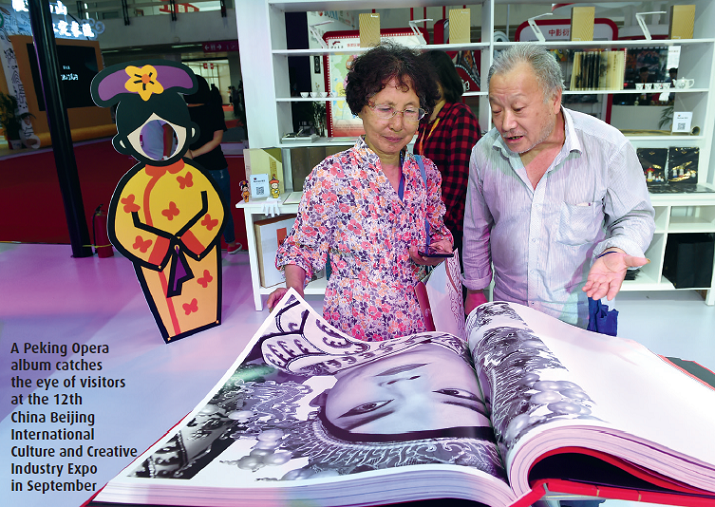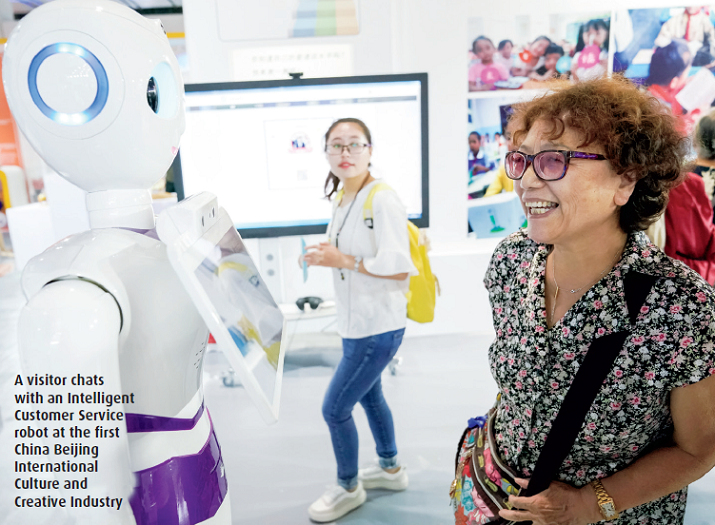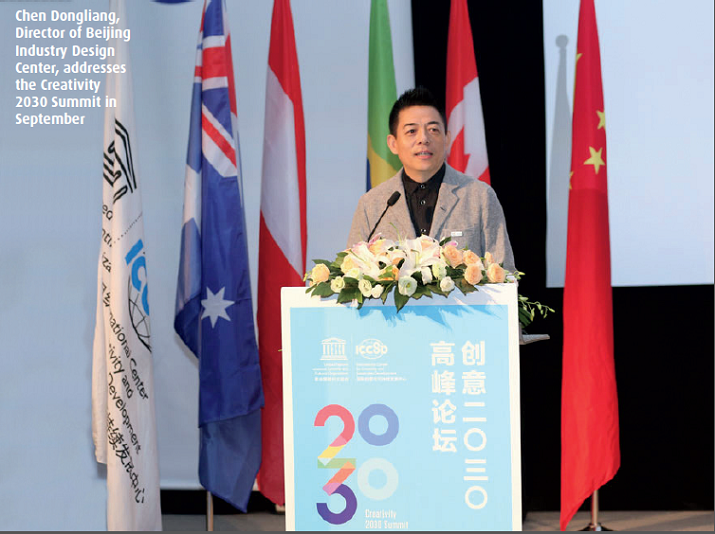|
||||||||||
| Home Nation World Business Opinion Lifestyle ChinAfrica Multimedia Columnists Documents Special Reports |
|
||||||||||
| Home Nation World Business Opinion Lifestyle ChinAfrica Multimedia Columnists Documents Special Reports |
| Lifestyle |
| Unleashing Creativity |
| The transformative power of innovation has become a burgeoning industry, boosting urban and cultural development |
| By Yu Nan and Li Jing | VOL.9 November 2017 ·2017-11-08 |

Do you want to experience living in a multi-dimensional sea-view room in a hotel transformed from a rocket launch control tower, or dine in a museum restaurant transformed from an abandoned train station? If you think these are just fantasies of an over ambitious imagination, then think again.
Ideas and practices for a better, more creative city life became reality at the Creativity 2030 Summit held on September 22, a sideline forum of 2017 Beijing Design Week. Organized by the United Nations Educational, Scientific and Cultural Organization (UNESCO) and International Center for Creativity and Sustainable Development (ICCSD), the summit shared original ideas and innovations on how to improve urban lifestyles.
"We are turning forgotten corners into designers’ arenas," Gideon Schmerling, Director of Media and Communications of the Municipality of Tel Aviv-Yafo of Israel, said at the summit.
Today, innovation has become a burgeoning industry, boosting urban development and gathering inspirational ideas from all over the world and creating platforms to make them realities.

City facelift
Baitasi, White Pagoda Temple, a neighborhood in the central area of Beijing, has been endowed with historical profundity and cultural connotation since it took shape during China’s Yuan Dynasty (1271-1368). However, worsening structural and social conditions such as dangerous old single-story houses, high population density and lack of public and sanitation facilities are in sharp contrast with the mushrooming surrounding skyscrapers in a rapidly developing Beijing. It has been a conundrum how to preserve traditions while updating the old neighborhood to keep pace with modern life.
To this purpose, the Baitasi Remade Program was formally put forward during 2015 Beijing Design Week. Designers from across the world were invited to share their creativity to establish a long-term model for improving the quality of life for the neighborhood and reviving culture through upgrading the area.
To date, 99 courtyards in the neighborhood have been vacated and the renovation plan of eight further hutongs is open to global architects for the best proposal.
Residents are given two options. They can vacate their courtyard homes voluntarily in which case they will be compensated by the government and can buy property elsewhere, or they can have their existing homes remodeled by award-winning architects and then move back in. Of the 99 courtyards vacated, some have already been transformed to a community library, apartments, galleries and workshops.
Tian Na, an architect remodeling the neighborhood, said the hope was that residents could later see how their homes had been transformed. "Some of them are transformed to public facilities and some are for businesses purposes. But the commercial ones must not undermine local tradition," said Tian.

Boosting urban development
Hans d’Orville, former assistant director general for strategic planning at UNESCO, pointed out at the summit that the world had entered the era of a creative economy after eras which were successfully dominated by agriculture, industry and tertiary industries. The creativity sector, including the culture industry, is the most dynamic part of the world economy, contributing the most to growth and creating significant amount of jobs.
Taking Beijing for example, the city lacks natural resources, but is abundant in culture and labor. Developing cultural and creative industries is not only tapping into advantageous potential, but will also facilitate the economic restructure of Beijing to a knowledge-based one. Compared to traditional industries, cultural and creative industries are knowledge-intensive and depend on innovation and cultural heritage instead of natural resources. They will bring material economic gains while exerting no impact on the natural environment.
Since 2006, Beijing had transformed companies that consume excess water and energy and discharge pollutants to over 30 creative districts like the popular 798 Art Zone.
In 2016, the design industry revenue totaled 200 billion yuan ($30.2 billion), a new momentum to the local municipal economy. In the first half year of 2017, the added value of cultural and creative industries in Beijing reached 173.5 billion yuan ($26.2 billion), 14 percent of the local economy.
Integrating global wisdom
To push forward reform on urban development through creativity and innovation, countries need to borrow experiences from all over the world.
In November 2015, the 38th session of the UNESCO General Conference approved the founding of ICCSD in Beijing. And in June, 2016, the center was officially launched. As the first UNESCO international center for creativity and sustainable development, ICCSD is expected to promote cultural and creative industries and the global flow of cultural products and services.
"Cultural and creative industries are vital to the implementation of the 2030 Agenda for Sustainable Development. China’s experience on urban development can be a good example for other countries to learn from," d’Orville told ChinAfrica.
As early as 2012, the Beijing Municipal Science and Technology Commission and the University of Nairobi established the Beijing-Nairobi Innovation and Design Research Center as a platform for exchanges on innovation between China and Africa. Since its establishment, students and designers have conducted exhibitions and exchanges on industrial design on the platform.
Margaret Jepkoech Kamar, Kenya’s former minister of Higher Education, Science and Technology, noted the establishment of the center brought China’s innovative ideas on industrial design to Kenya and would accelerate Kenya’s efforts on realizing targets set by the Kenya Vision 2030. The vision is a national long-term development policy that aims to transform Kenya into a newly industrializing, middle-class country providing a high quality of life to all its citizens by 2030 in a clean and secure environment.
d’Orville urged China and Africa to strengthen cooperation and experience-sharing on sectors like transportation infrastructure planning and engineering.
He believes ICCSD would accelerate the process of sharing Chinese experience on cultural and creative industries and promote cultural diversity, contributing to the realization of the UN’s 2030 Agenda.
"The purpose of this summit is to share resources and jointly push forward cooperation between cities busy with urban development driven by innovation and creativity," said Chen Dongliang, Executive Deputy Director of the Organizing Committee Office of Beijing Design Week and Director of Beijing Industrial Design Center.
|
||
| About Us | Contact Us | Advertise with Us | Subscribe |
| Copyright Beijing Review All rights reserved 京ICP备08005356号-5 京公网安备110102005860号 |